Abstract
This study evaluated contingent reinforcement for benzodiazepine-free urines as a therapeutic intervention for promoting reduced use of supplemental benzodiazepine drugs among methadone maintenance outpatients. Ten methadone maintenance patients were selected for participation on the basis of positive urinalysis results. During a 12-week intervention period these patients were offered clinic privileges, including monetary payments or methadone take-home doses, contingent on benzodiazepine negative urinalysis test results. Eight of ten participants responded to the intervention with at least 2.5 weeks of consecutive clean urines. An increase in benzodiazepine-negative tests during the contingent reinforcement period was significant for the group as a whole. The results suggest that more widespread application of contingent reinforcement procedures may be warranted in drug abuse treatment clinics.
Full text
PDF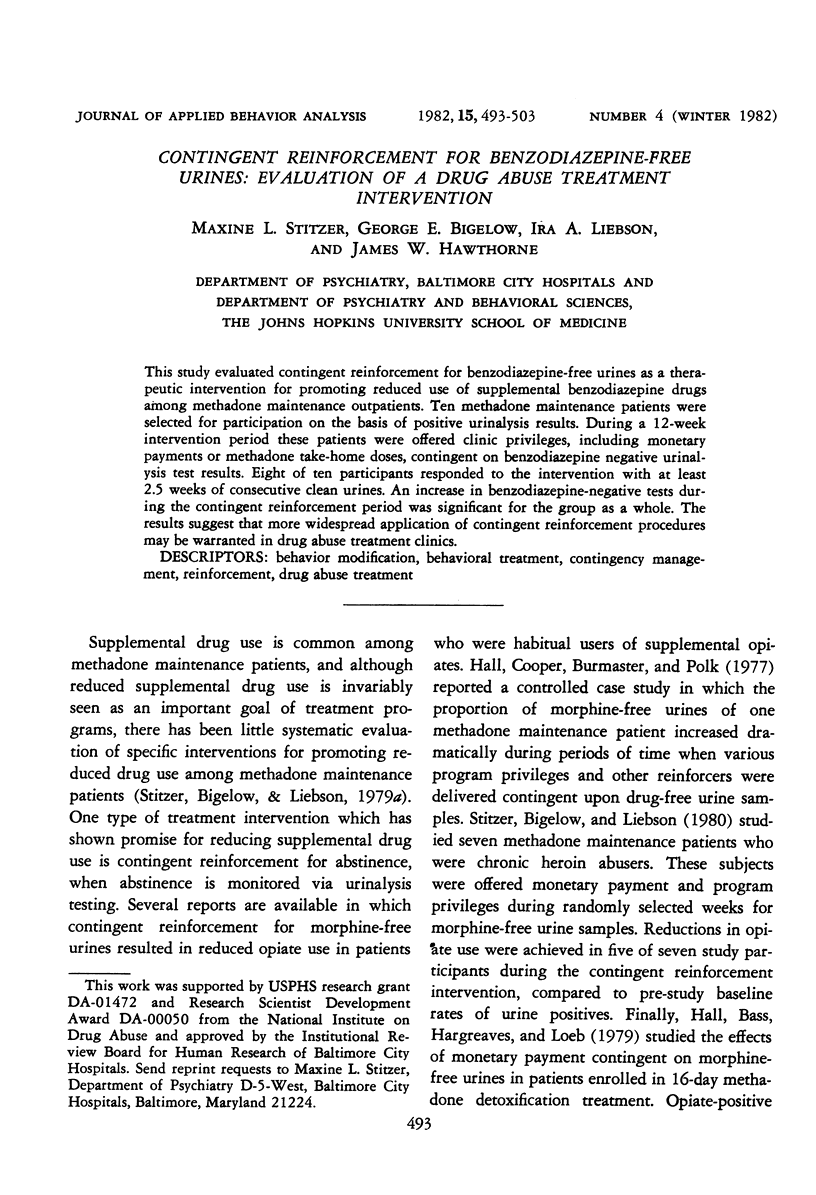
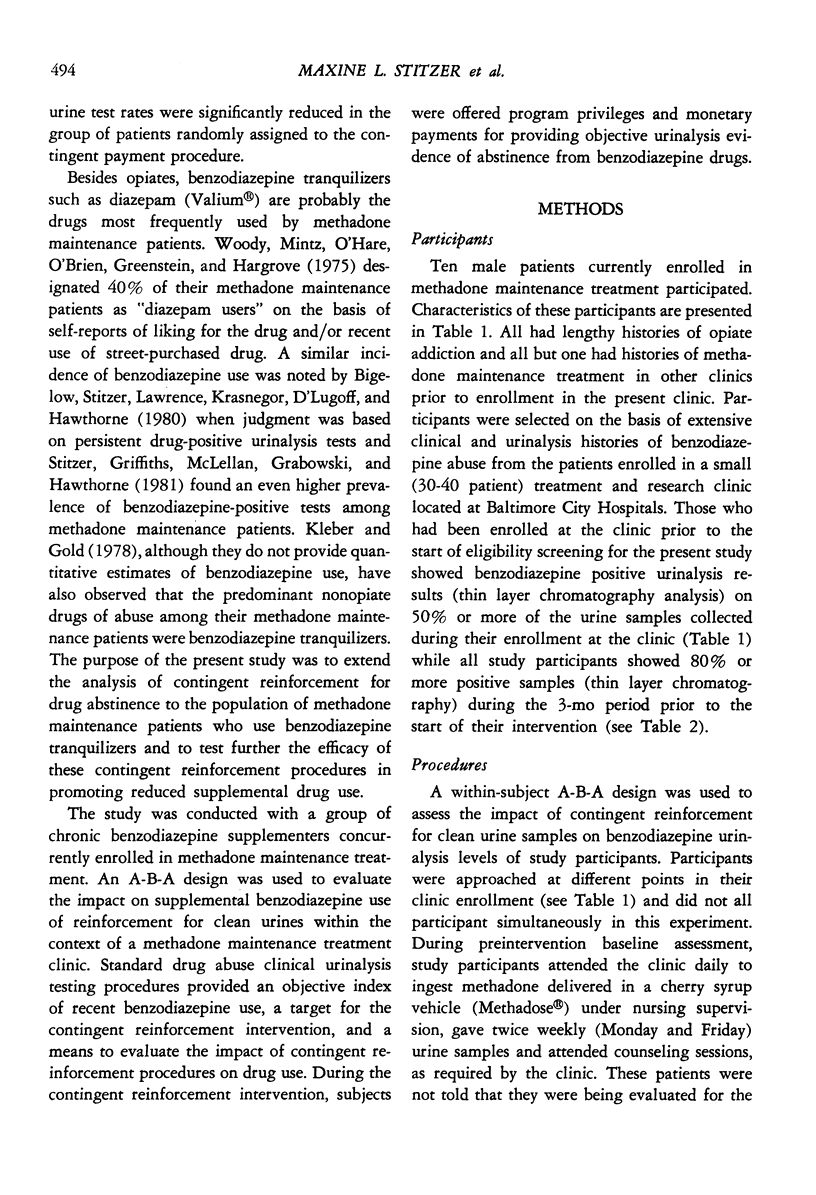
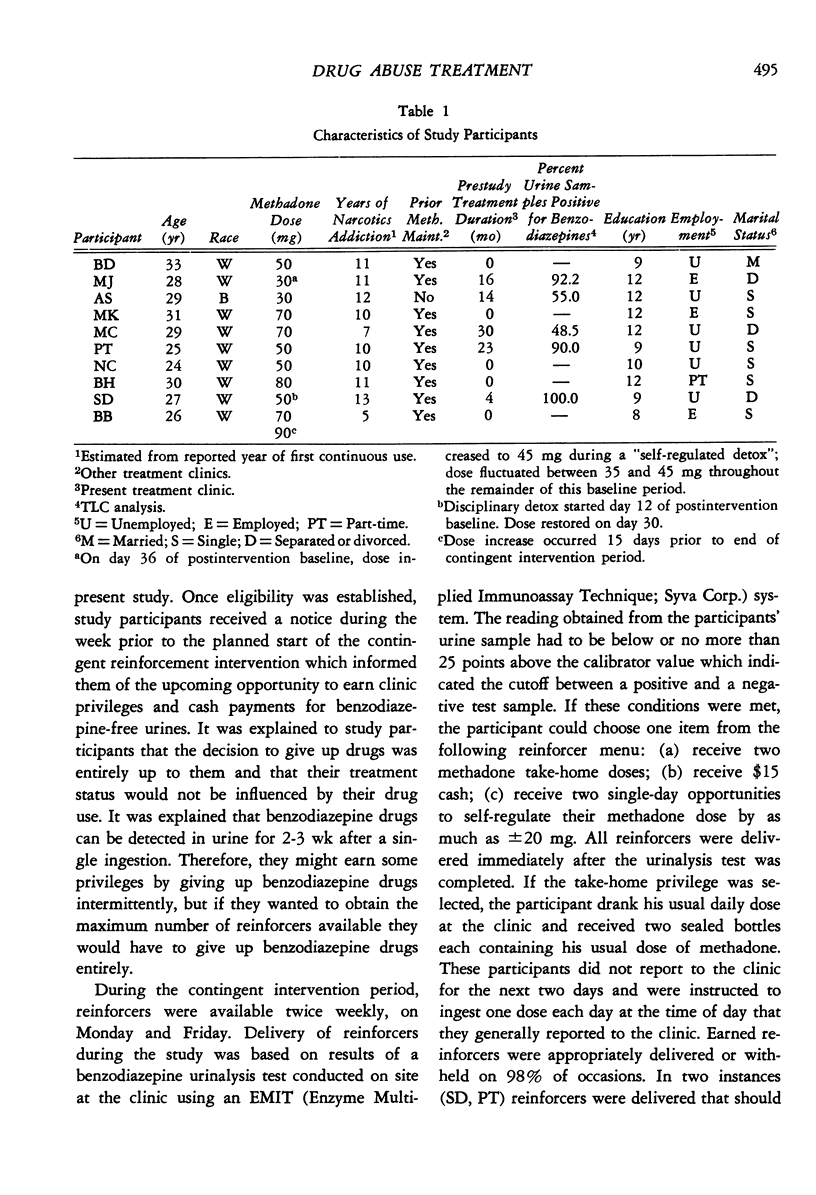
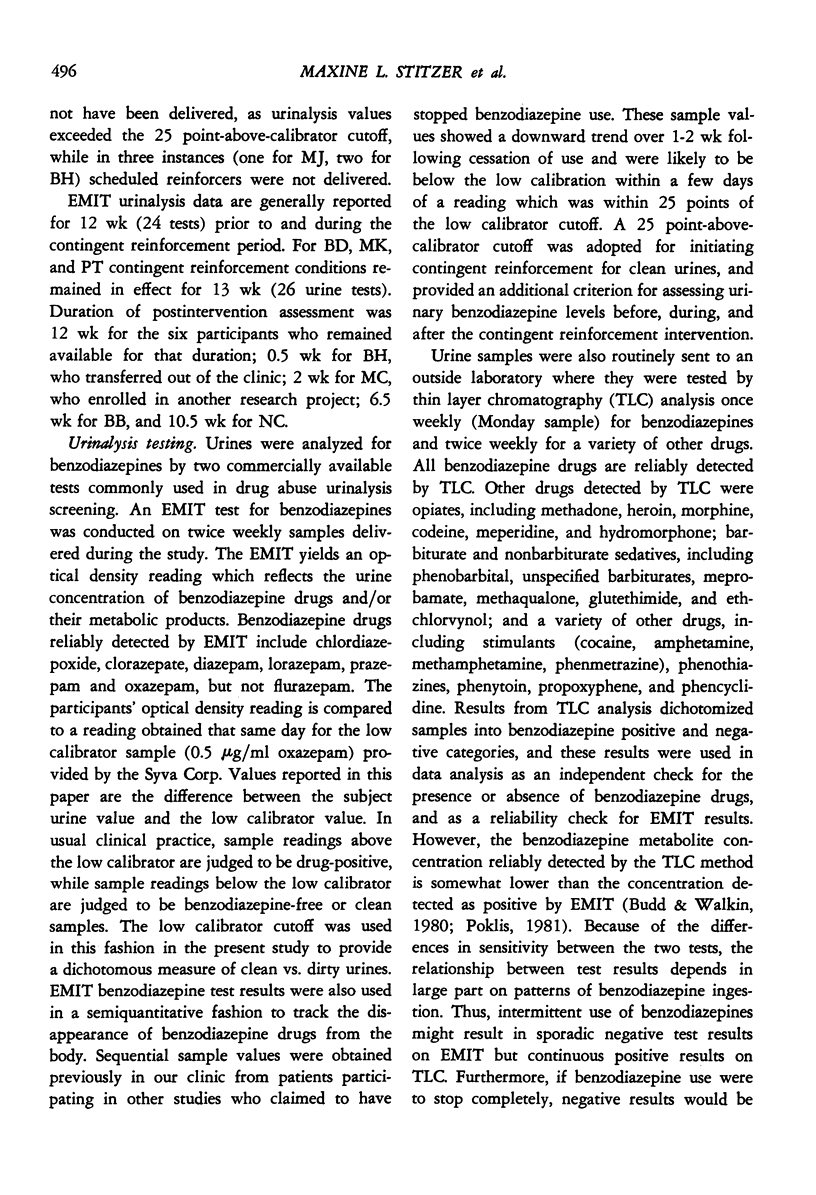
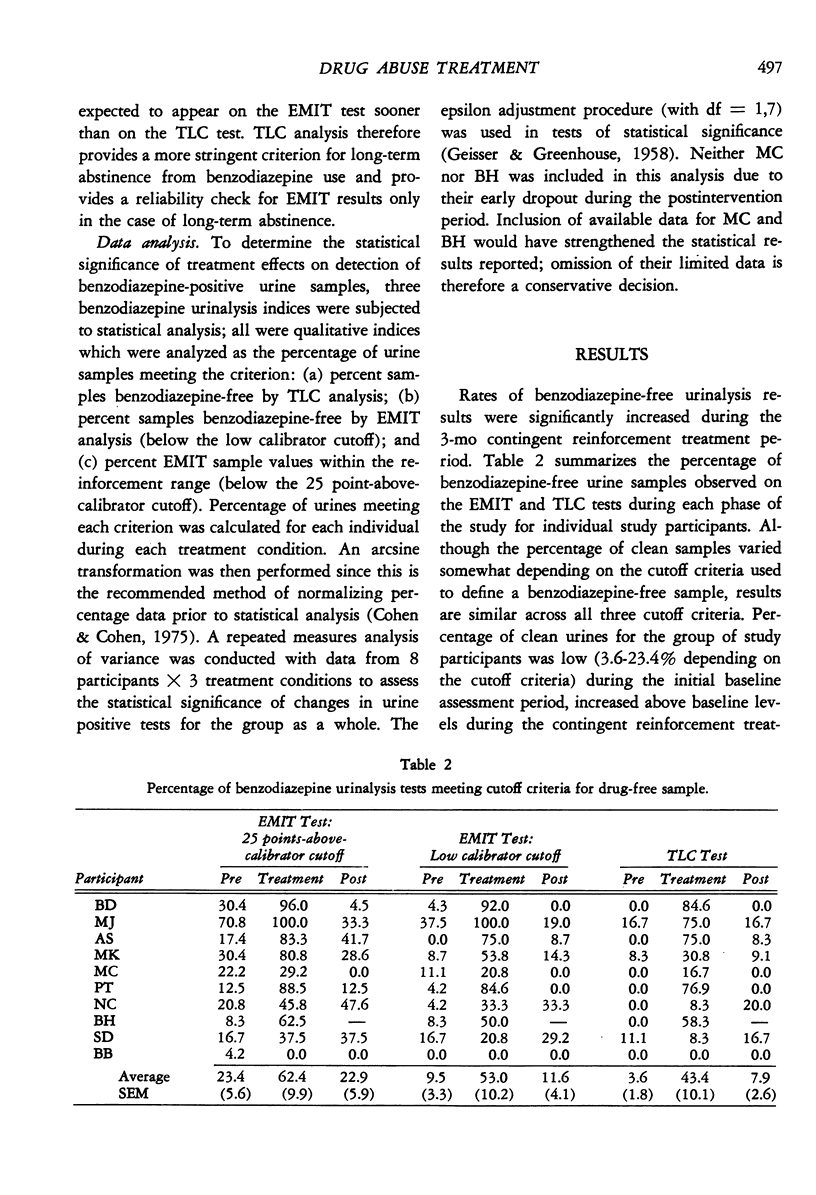
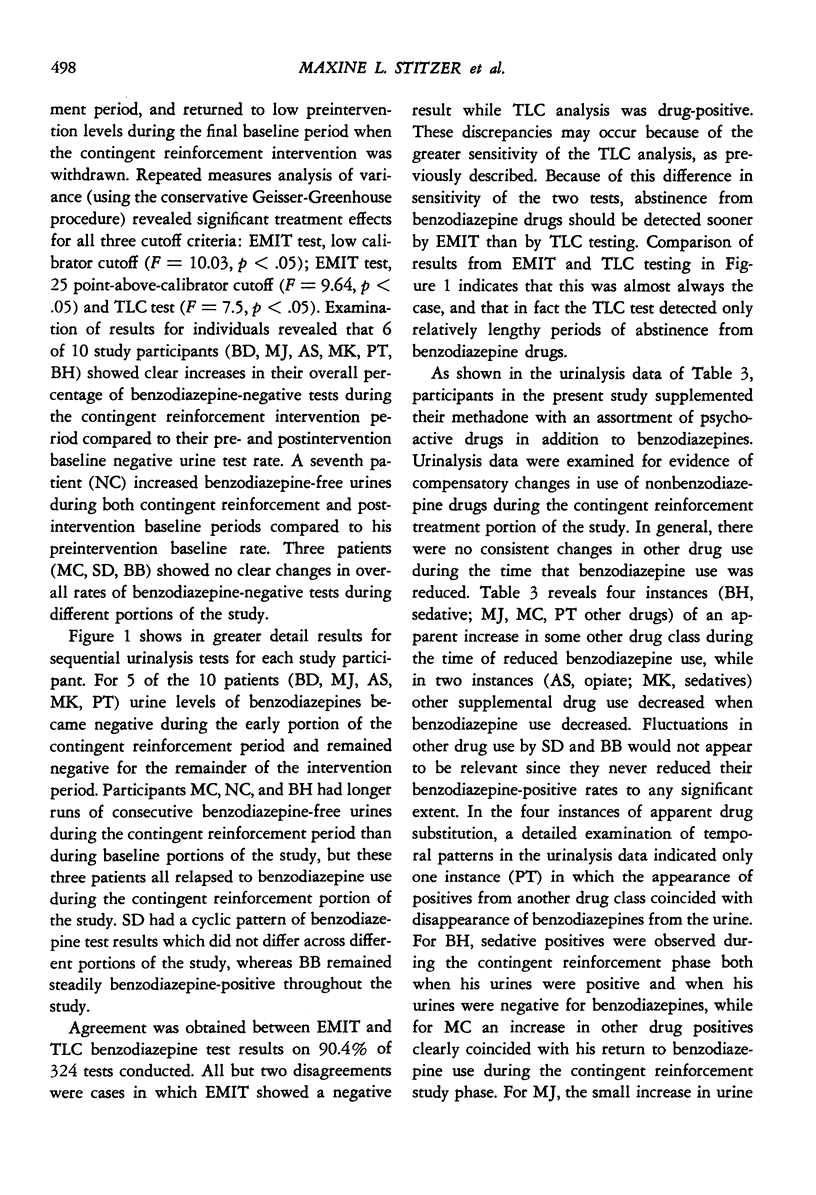
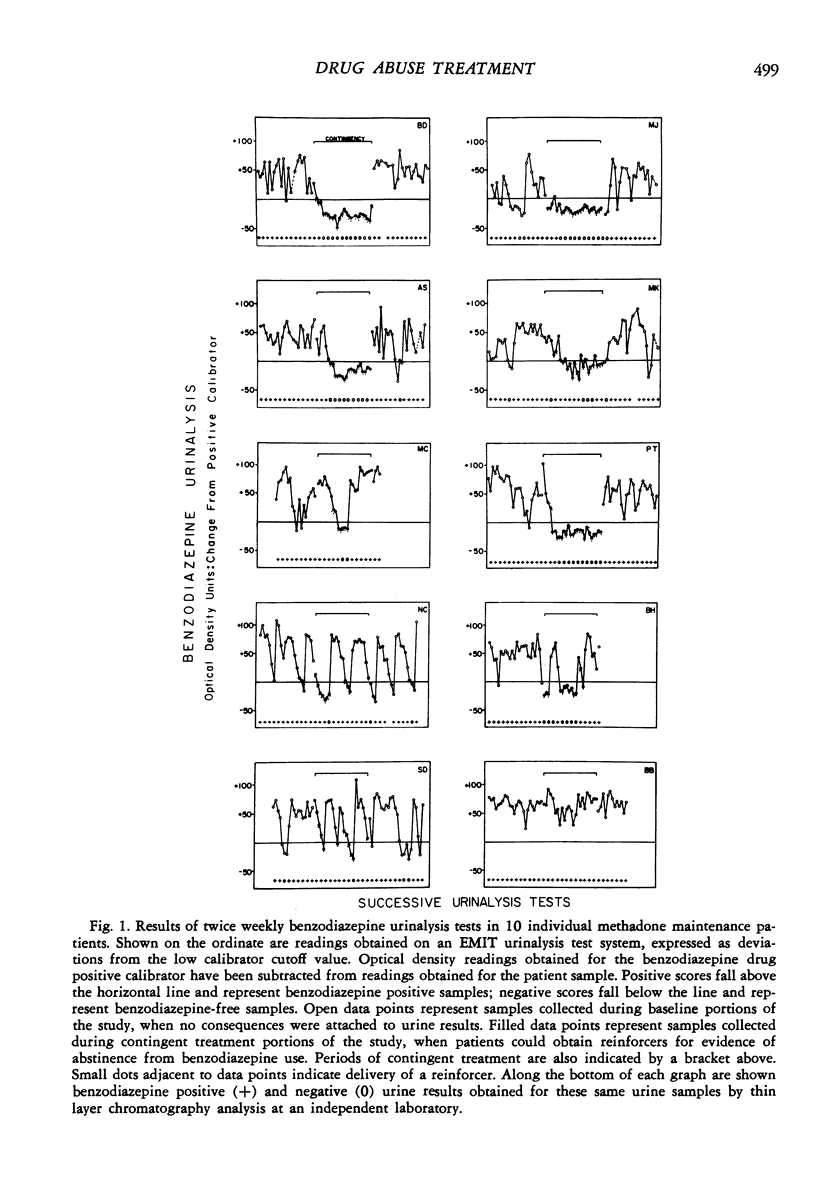
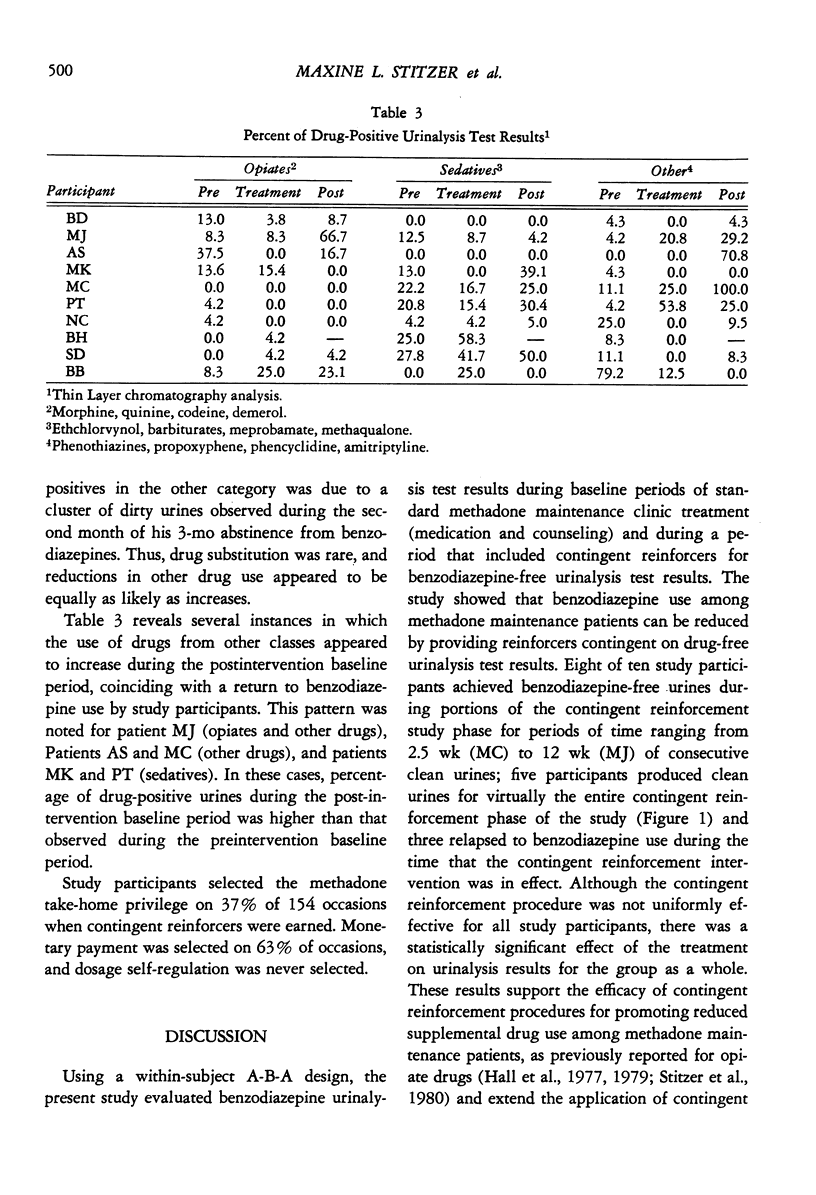
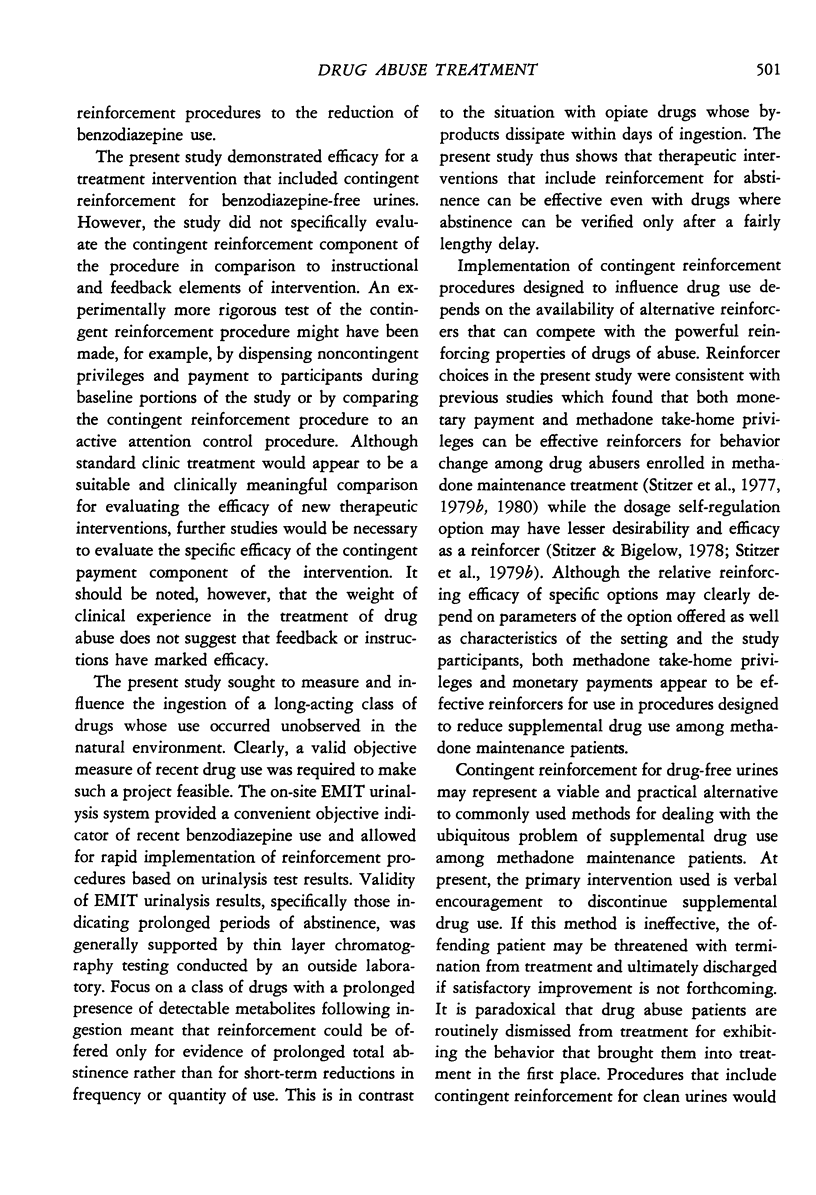
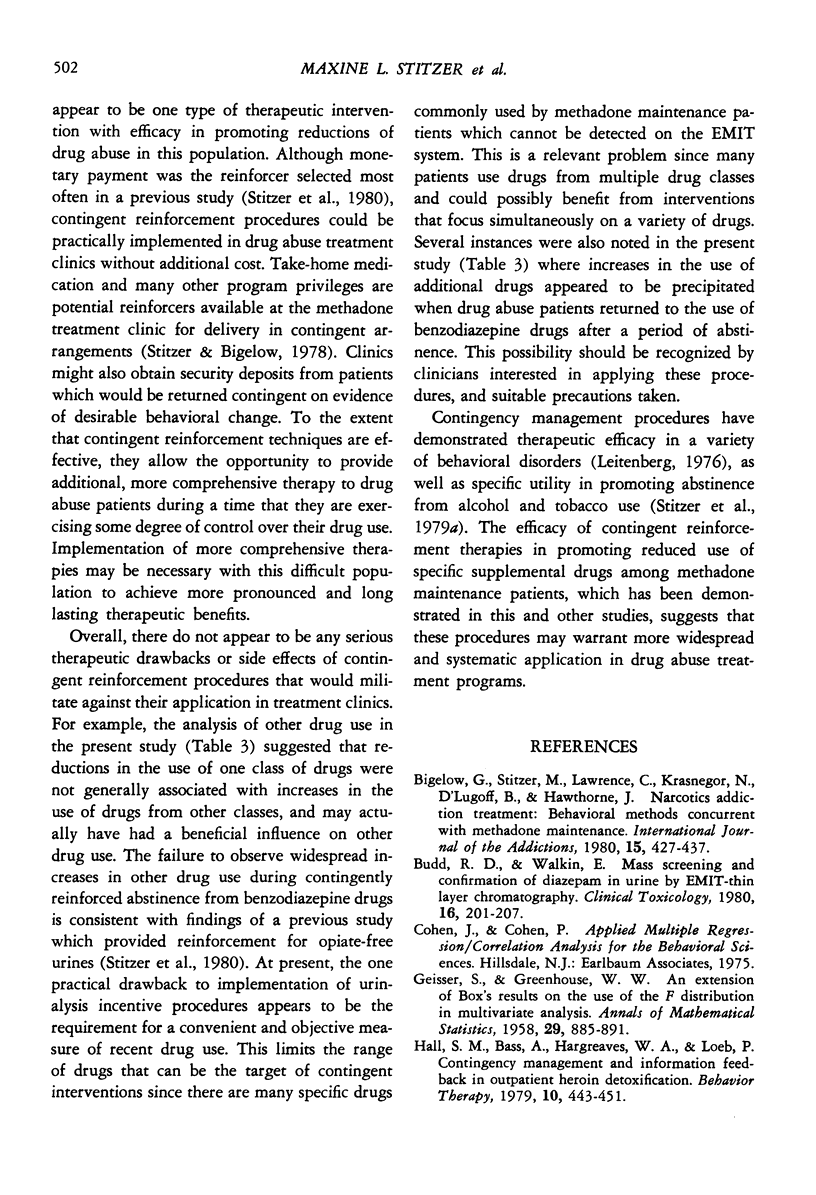
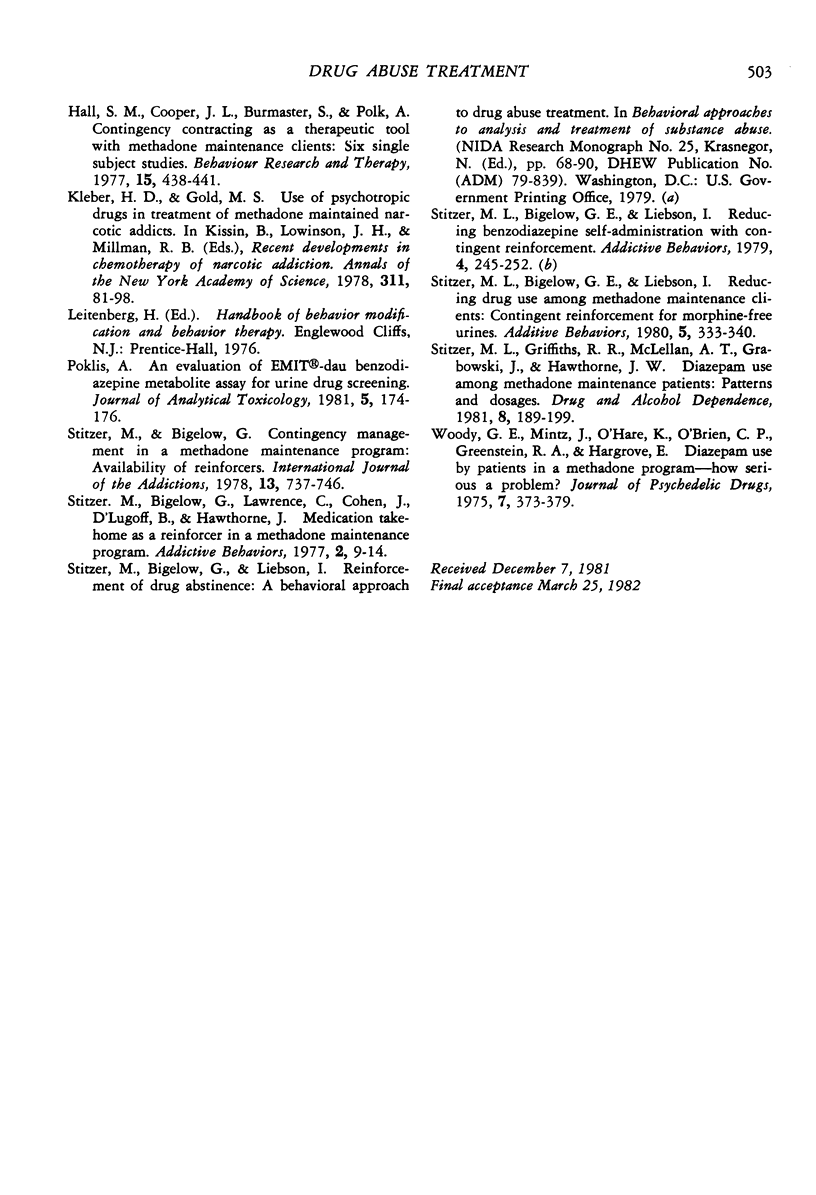
Selected References
These references are in PubMed. This may not be the complete list of references from this article.
- Bigelow G., Stitzer M., Lawrence C., Krasnegor N., D'Lugoff B., Hawthorne J. Narcotics addiction treatment: behavioral methods concurrent with methadone maintenance. Int J Addict. 1980 Apr;15(3):427–437. doi: 10.3109/10826088009040028. [DOI] [PubMed] [Google Scholar]
- Budd R. D., Walkin E. Mass screening and confirmation of diazepam in urine by EMIT-thin-layer chromatography. Clin Toxicol. 1980 Apr;16(2):201–207. doi: 10.3109/15563658008989938. [DOI] [PubMed] [Google Scholar]
- Hall S. M., Cooper J. L., Burmaster S., Polk A. Contingency contracting as a therapeutic tool with methadone maintenance clients: six single subject studies. Behav Res Ther. 1977;15(5):438–441. doi: 10.1016/0005-7967(77)90049-3. [DOI] [PubMed] [Google Scholar]
- Kleber H. D., Gold M. S. Use of psychotropic drugs in treatment of methadone maintained narcotic addicts. Ann N Y Acad Sci. 1978;311:81–98. doi: 10.1111/j.1749-6632.1978.tb16767.x. [DOI] [PubMed] [Google Scholar]
- Poklis A. An evaluation of EMIT-dau Benzodiazepine Metabolite Assay for urine drug screening. J Anal Toxicol. 1981 Jul-Aug;5(4):174–176. doi: 10.1093/jat/5.4.174. [DOI] [PubMed] [Google Scholar]
- Stitzer M. L., Bigelow G. E., Liebson I. Reducing benzodiazepine self-administration with contingent reinforcement. Addict Behav. 1979;4(3):245–252. doi: 10.1016/0306-4603(79)90034-0. [DOI] [PubMed] [Google Scholar]
- Stitzer M. L., Bigelow G. E., Liebson I. Reducing drug use among methadone maintenance clients: contingent reinforcement for morphine-free urines. Addict Behav. 1980;5(4):333–340. doi: 10.1016/0306-4603(80)90007-6. [DOI] [PubMed] [Google Scholar]
- Stitzer M. L., Griffiths R. R., McLellan A. T., Grabowski J., Hawthorne J. W. Diazepam use among methadone maintenance patients: patterns and dosages. Drug Alcohol Depend. 1981 Nov;8(3):189–199. doi: 10.1016/0376-8716(81)90061-2. [DOI] [PubMed] [Google Scholar]
- Stitzer M., Bigelow G. Contingency management in a methadone maintenance program: availability of reinforcers. Int J Addict. 1978 Jul;13(5):737–746. doi: 10.3109/10826087809039299. [DOI] [PubMed] [Google Scholar]
- Stitzer M., Bigelow G., Lawrence C., Cohen J., D'Lugoff B., Hawthorne J. Medication take-home as a reinforcer in a methadone maintenance program. Addict Behav. 1977;2(1):9–14. doi: 10.1016/0306-4603(77)90003-x. [DOI] [PubMed] [Google Scholar]


